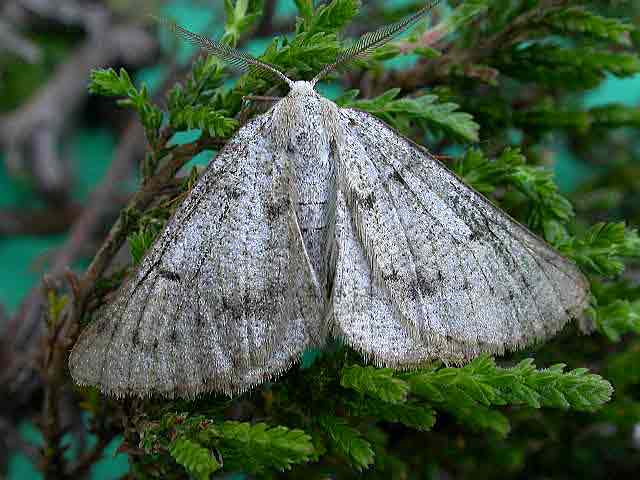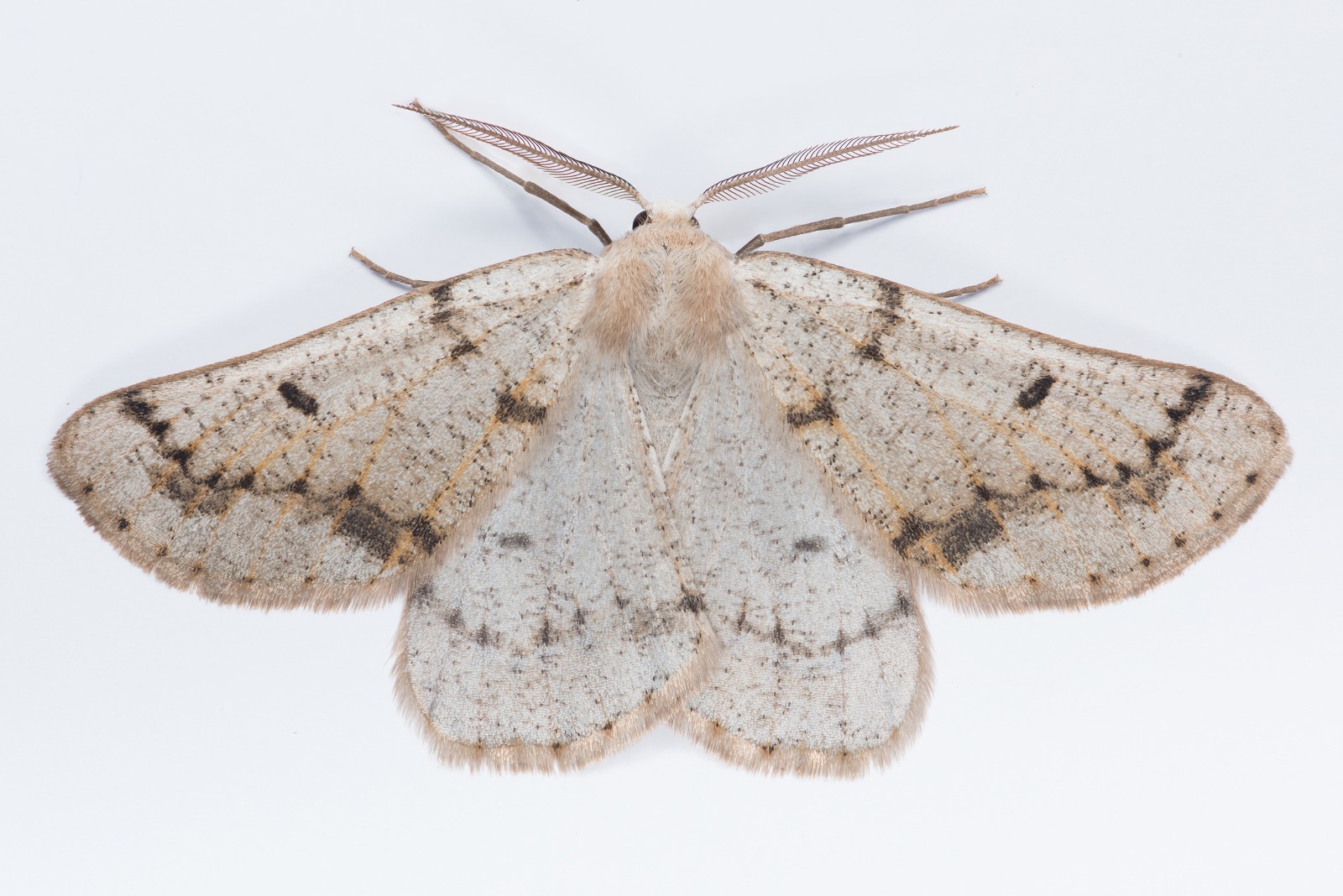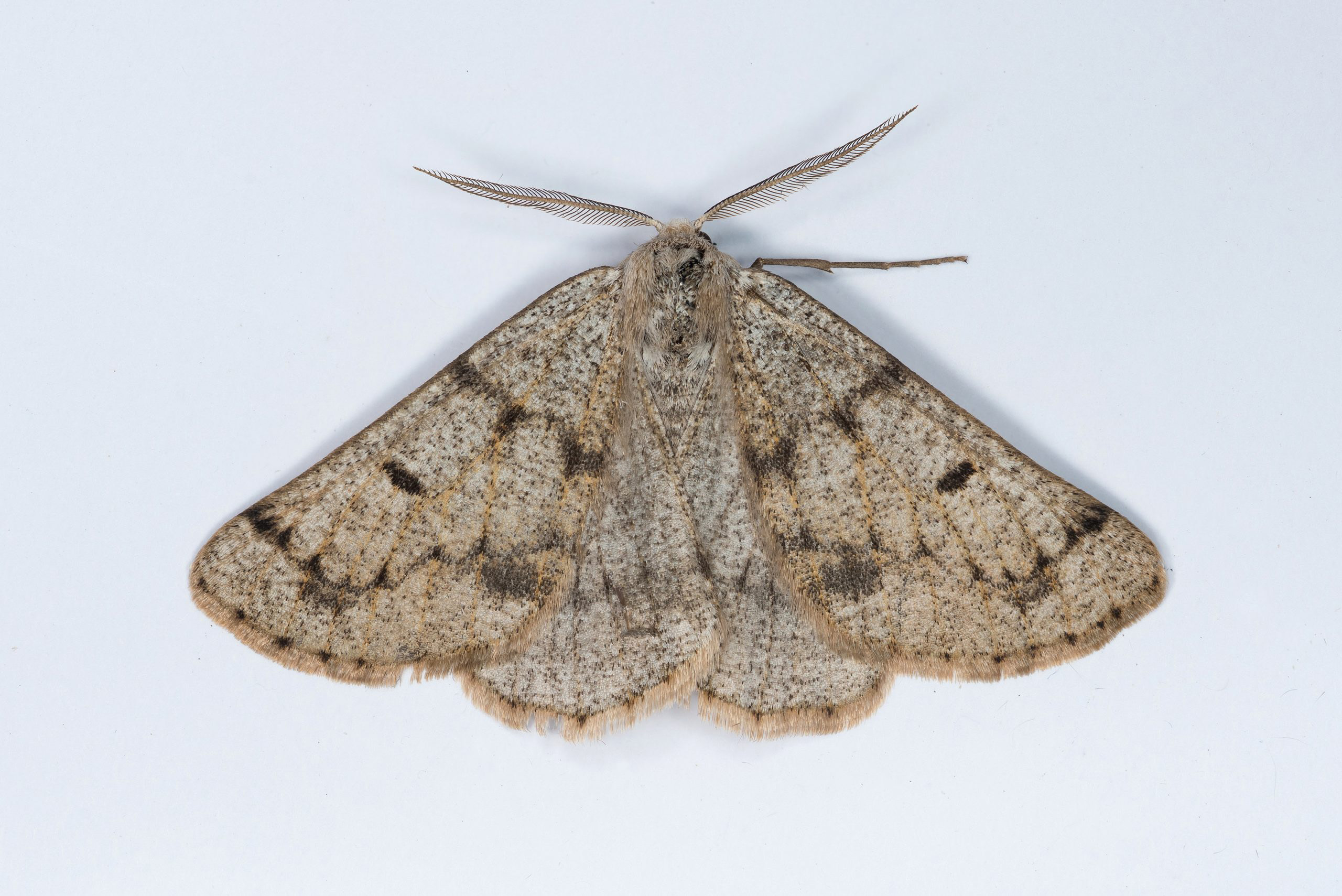 – click for Adult Macro Verification Guidelines
– click for Adult Macro Verification Guidelines
 – Rare / Uncommon / Scarce
– Rare / Uncommon / Scarce
 – easy to identify, generally distinctive and unlikely to be confused with other species.
– easy to identify, generally distinctive and unlikely to be confused with other species.


Image Gallery
Distribution Map for Dyscia fagaria
↳ 3 from After 2025
↳ 5 from 2020 - 2024
↳ 24 from Before 2020
If the Map Layers function fails, just refresh the page and it should be OK after. Use the +- zoom on the top left, or on a tablet, use two fingers to zoom. Remember, the last layer you ticked is the one which displays the popup information - they sit on top of each other - de-select then re-select, to see the popup values.
Bedrock Geology ** indirectly affects moth distribution by influencing the type of habitat and food plants available in an area. In turn, this may affect the types of moths that can thrive, or where they can most likely be found.
NBN Atlas UK Distribution for – Dyscia fagaria
⚠️ Please wait for the map to load fully – do not click the link shown.
Note – the NBN Atlas datasets are listed in the map below and vary in their currency (uptodateness) – however,
the map does give a general indication of the moth's distribution across the UK.
Monthly Records By Year:
Dyscia fagaria
( data includes both Larvae and Adult Stages )
Monthly Counts By Year: Dyscia fagaria
( data is based on 'Adult' stage records only. )
First/Last Recorded Dates: Dyscia fagaria
Adult-only & Anything [Larvae, Pupae, Adult, Mines]
Shading shows moth presence between dates
Click the colour discs below to Select/De-select as Required
Recordings By Year: Dyscia fagaria
( All data includes both Larvae and Adult Stages )
Annual Growth Rate (AGR): Dyscia fagaria
AGR: 0% | Total % Change: 0%
CUSUM Analysis: Dyscia fagaria
Counts for the current year (2025) are pro-rated based on data available up to month 8 (August) to provide a full-year equivalent.
What the Y-axis "Cumulative Deviation" means: Cumulative Deviation shows the running total of how each year’s moth population count differs from the long-term average. i
Hectad (10kmx10km) Coverage: Dyscia fagaria
( data includes both Larvae and Adult Stages )
Flight Periods – Indicative –vs– Recorded Data
Dyscia fagaria
Dyscia fagaria
( data includes Adult Stage only )
Flight Period chart – the grey hatched area above, which can cross one or more months, pictorially represents the best guess we have for this moth's flight periods [month/s]. The coloured lines represent the actual months seen in flight, from site observation records received between 2020-2025.
Records Behind the Map and Charts - Dyscia fagaria – 32 records available
Listed by Year - descending - scroll across to see all table columns
| Site Name | Tetrad | Date | Count | Stage | Source |
|---|---|---|---|---|---|
| Wardlow, Roost Barn | SK17X | 16/05/2025 | 1 | adult | vc57_irecords_extract |
| Derbyshire Wild Life Trust Long Clough | SK09G | 09/05/2025 | 1 | adult | vc57_irecords_extract |
| Glossop, Hague Street, Hay Meadow | SK09G | 21/05/2025 | 1 | adult | vc57_irecords_extract |
| Glossop, Black Moor at m | SK09Q | 14/07/2024 | 1 | adult | vc57_irecords_extract |
| Staveley Derbyshire | SK47H | 23/06/2023 | 1 | adult | vc57_irecords_extract |
| Glossop, Gnat Hole Rough Fields | SK09L | 02/06/2023 | 1 | adult | vc57_irecords_extract |
| Glossop, Moorfield, Wood's Cabin | SK09L | 22/05/2023 | 1 | adult | vc57_irecords_extract |
| Hathersage | SK28F | 26/06/2021 | 1 | adult | vc57_irecords_extract |
| Birch Vale | SK08I | 07/06/2018 | 1 | adult | vc57_irecords_extract |
| The Old Manse, Ault Hucknall, Glapwell | SK46S | 22/07/2013 | 1 | Adult | vc57_danes_bc_data |
| The Old Manse, Ault Hucknall, Glapwell | SK46S | 22/07/2013 | 1 | Adult | vc57_danes_bc_data |
| The Hollies,Station Rd,Darley Dale | SK26R | 08/06/2009 | 1 | Adult | vc57_danes_bc_data |
| Beeley Moor (Slagmill Plantation) | SK36E | 09/05/2007 | 1 | Adult | vc57_danes_bc_data |
| Beeley Moor (triangle), Beeley | SK26Y | 22/05/1990 | 3 | Adult | vc57_danes_bc_data |
| Beeley Moor (triangle), Beeley | SK26Y | 27/05/1990 | 2 | Adult | vc57_danes_bc_data |
| Beeley Triangle, Beeley Moor, Beeley | SK26Y | 27/05/1990 | 2 | Adult | vc57_danes_bc_data |
| Beeley Moor (triangle), Beeley | SK26Y | 22/05/1990 | 3 | Adult | vc57_danes_bc_data |
| Beeley Moor, Beeley (site not precies) | SK26Z | 03/07/1979 | 5 | Adult | vc57_danes_bc_data |
| Johnnygate, Barlow, Chesterfield | SK37C | 29/07/1979 | 1 | Adult | vc57_danes_bc_data |
| Johnnygate, Barlow, Chesterfield | SK37C | 29/07/1979 | 1 | Adult | vc57_danes_bc_data |
| Whitesprings, Hall Dale, Darley Dale (site not precise) | SK26R | 24/04/1976 | 1 | Larvae | vc57_danes_bc_data |
| Wragg's Quarry, Beeley Moor | SK26Y | 04/05/1971 | 1 | Larvae | vc57_danes_bc_data |
| Wragg's Quarry, Beeley Moor, Beeley | SK26Y | 04/05/1971 | 1 | Larvae | vc57_danes_bc_data |
| Beeley Moor, Beeley (site not precies) | SK26Z | 06/07/1969 | 1 | Adult | vc57_danes_bc_data |
| Wragg's Quarry,Rowsley Moor | SK26Y | 26/07/1969 | 1 | Adult | vc57_danes_bc_data |
| Beeley Moor, Beeley (site not precise) | SK26Z | 06/07/1969 | 1 | Adult | vc57_danes_bc_data |
| Wragg's Quarry, Beeley Moor, Beeley | SK26Y | 26/07/1969 | 1 | Adult | vc57_danes_bc_data |
| Slagmill Plantation (moors area) (site not precise) | SK26Z | 18/06/1960 | 1 | Adult | vc57_danes_bc_data |
| Wragg's Quarry,Rowsley Moor | SK26Y | 21/06/1958 | 1 | Adult | vc57_danes_bc_data |
| Wragg's Quarry, Beeley Moor, Beeley | SK26Y | 21/06/1958 | 1 | Adult | vc57_danes_bc_data |
| Wragg's Quarry,Rowsley Moor | SK26Y | 27/05/1958 | 1 | Adult | vc57_danes_bc_data |
| Wragg's Quarry, Beeley Moor, Beeley | SK26Y | 27/05/1958 | 1 | Adult | vc57_danes_bc_data |






